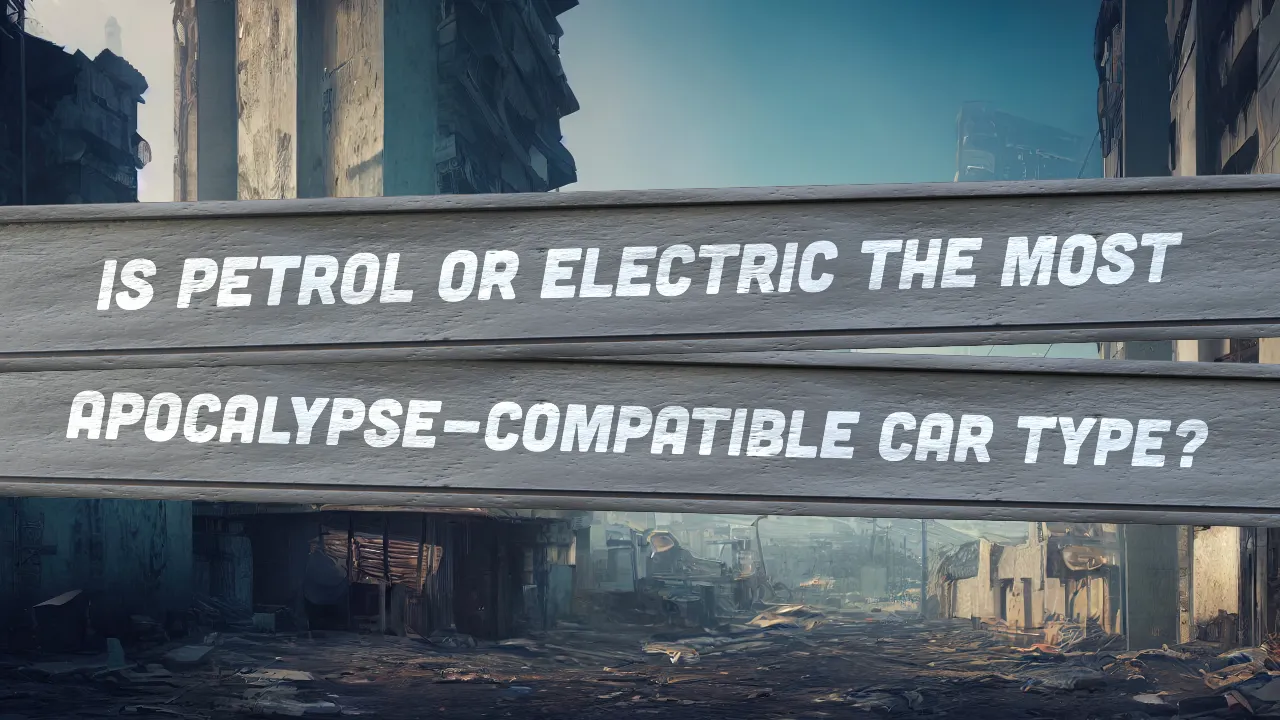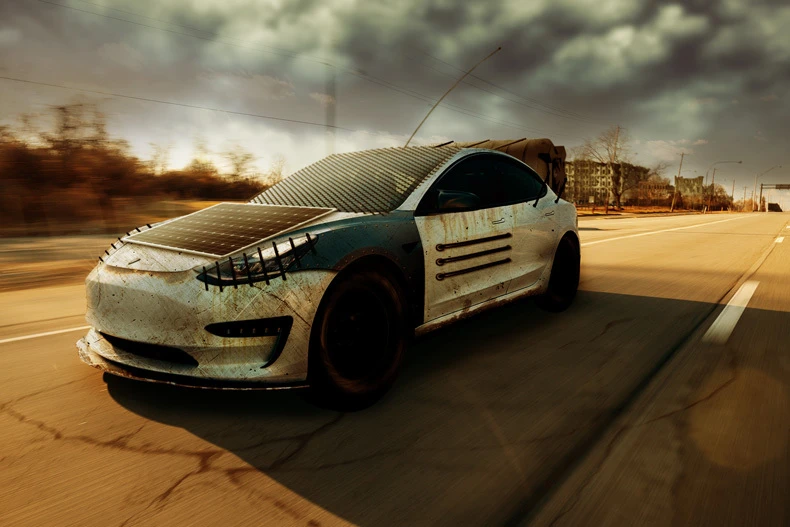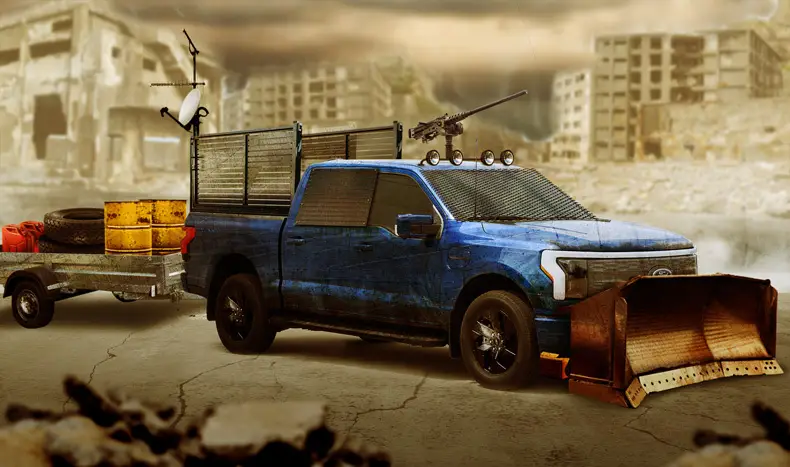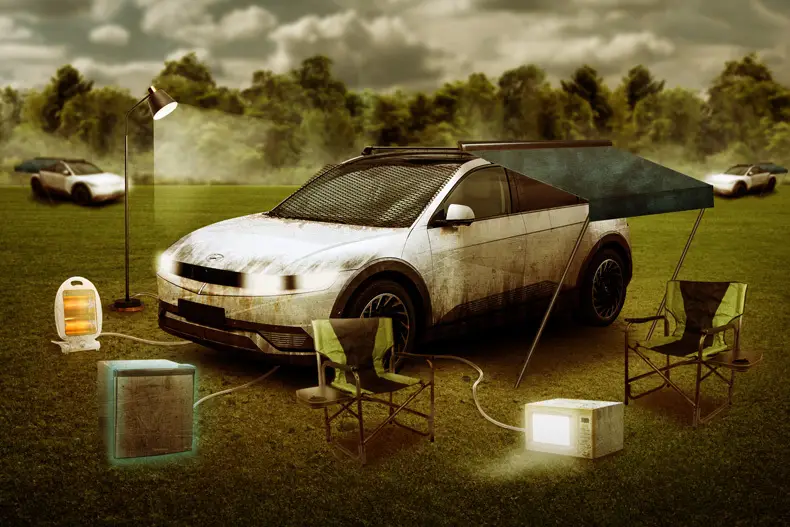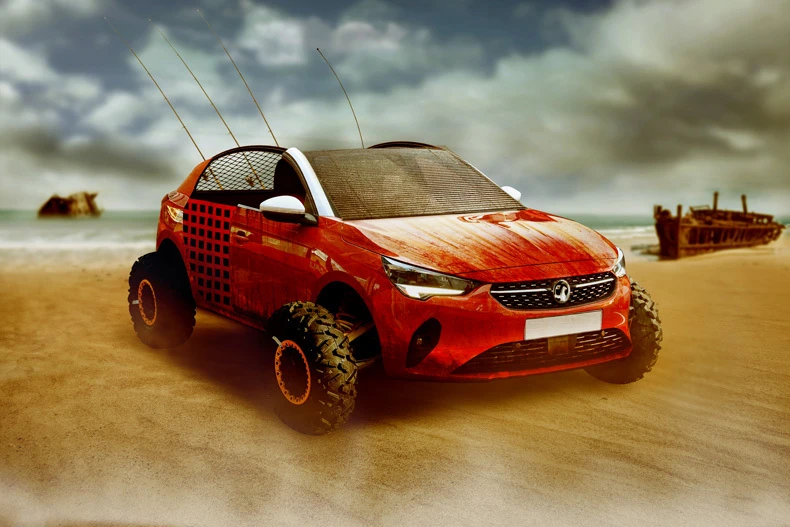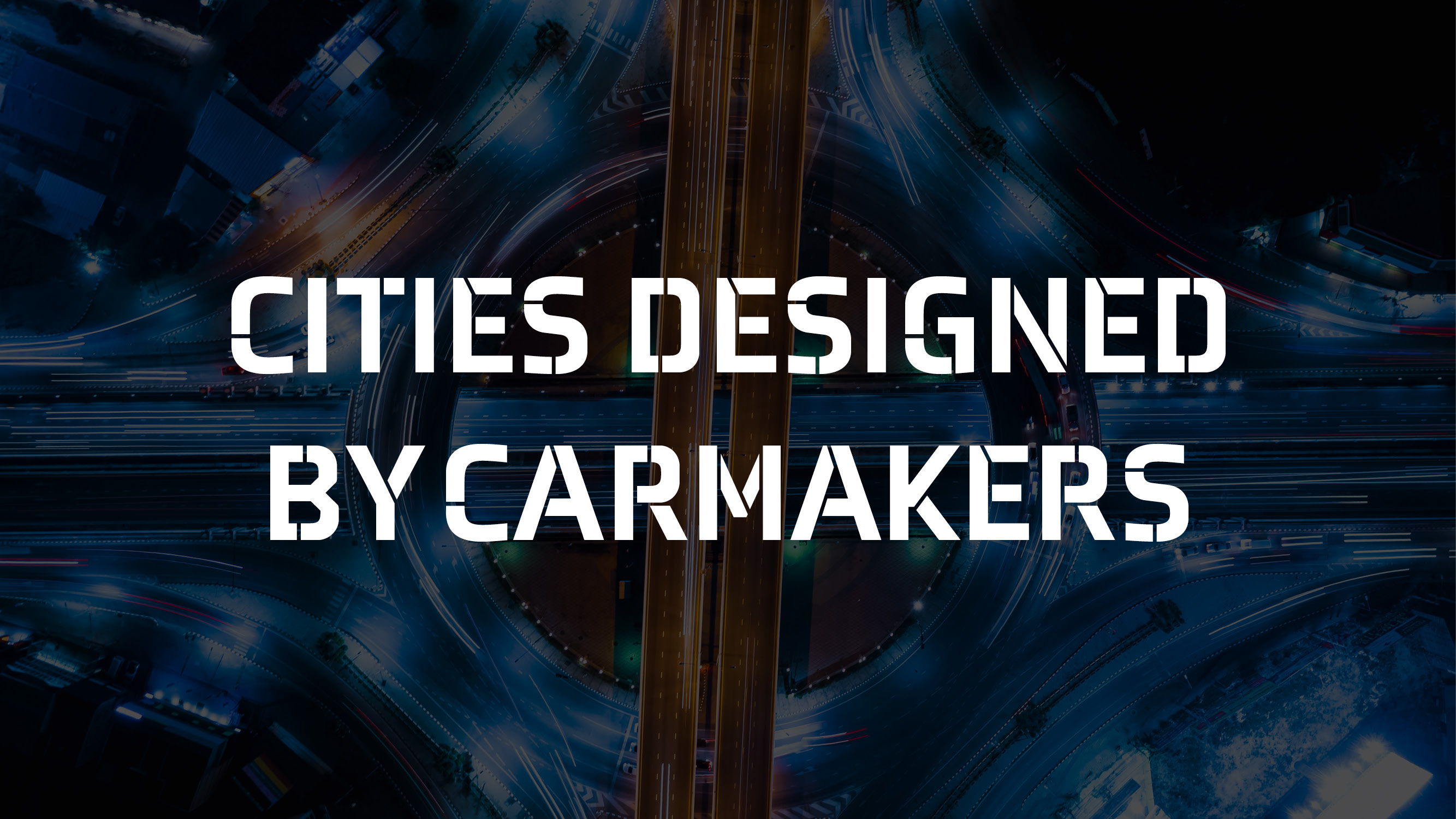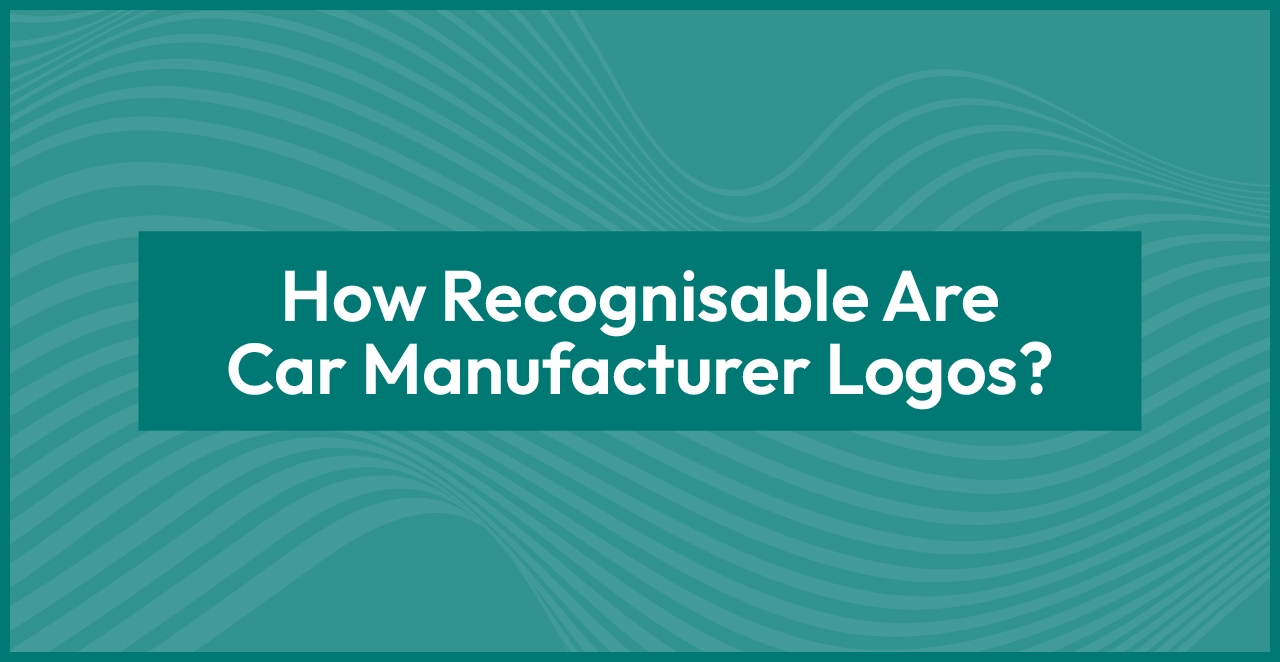Despite the countless interpretations of post-apocalyptic TV and film, it’s a genre that proves popular time and time again; the Hunger Games alone amassed $2.97 billion at the box office.
That has us wondering which cars are best equipped to deal with such a scenario, and how they might look when the weekly shops and morning commutes make way for supply runs and escapes. Scroll on for a raft of post-apocalyptic car renders, and also a look at the real-world car tech that could come in handy.
Key findings:
-
Petrol cars could be unusable in as little as six months
-
Diesel would manage six to 12 months before it’s unusable
-
The Ford F-150 Lightning is powerful enough to haul up to 11,340 tins of food
-
An entry-level IONIQ 5 can power a home’s lighting for more than half a week or run a dishwasher for almost a fortnight
Fuel Stocks Could Be Unusable Within Just Six Months
You might assume a doomsday event would end the electrification of motoring, but the reality is perhaps not as straightforward. While electrical grids would most likely fail, these aren’t the only source of electricity. Petrol and diesel stocks, however, would degrade in as little as six months. Using them beyond this can clog components and keep a car off the road.
Relying on electric cars and renewable energy, such as wind and solar power, might be the safer bet. And as the purpose of driving would switch to infrequent supply runs, electricity wouldn’t be needed in as great a quantity.
Of all the EVs to survive the apocalypse, the hugely popular Tesla Model 3 would most likely be among them – as the first electric car to pass one million global sales, there’d be plenty to pick from. We’ve imagined our disaster-ready Model 3 with riot barriers, long-distance radio equipment and a tank for collecting rainwater on the move.
Based on Tesla’s recommended vehicle loading, a Tesla Model 3 with one driver and no passengers can carry 913 tins of food. Even after the above modifications, you’re probably looking at a boatload of baked beans and sweetcorn.
The Elephant-Towing F-150 Lightning Would Be Hot Property In An Apocalypse
With a max payload of almost five tonnes – enough to pull an elephant, or 11,340 tins of food – the Ford F-150 Lightning is a prepper’s dream. An all-electric, all-American truck, it’s the most future-proof model in the F-Series lineup – a range that’s been a firm US favourite since the first edition arrived more than 60 years ago.
But despite its bulk and huge towing capacity, it’s no slouch; the standard 98kWh battery pack manages 0-60mph in just over four seconds, as well as a range of 240 miles. The higher specs manage even better figures.
Its uses go beyond dragging supplies and campmates out of bother, too. The Lightning is among a select few EVs capable of bi-directional charging, meaning it can send its stored electricity to other devices. But we’ve left that to the Hyundai IONIQ 5 below – our F-150 gets a plough and armoured bed for making a path through tricky spots.
The Hyundai IONIQ 5’s Two-Way Charging Can Power A Home’s Lighting For The Best Part Of A Week
In a world without mains electricity, a car capable of storing and distributing power (known as bi-directional charging) would make life a lot easier. That’s why we imagine the Hyundai IONIQ 5 would be a go-to for survivors.
With Vehicle-to-Load (V2L) technology and an on-board plug capable of up to 3.6kW, the IONIQ 5 can power several appliances, from LED bulbs to fridge freezers. Home comforts needn’t fall by the wayside in an apocalypse – using only 60% of the battery (based on the recommended charge level of between 20% and 80%) would boil enough kettles for three days of hot drinks, or two days of electric oven use.
If several IONIQ 5s were hooked up to camp, receiving electricity via wind turbines or solar panels and then feeding it to other devices, they potentially offer a never-ending loop of renewable energy.
An All-Terrain, Beach Buggy-Styled Electric Corsa
As a repeat bestseller, there are likely to be a lot of Vauxhall Corsas lying around if things go south. And the Corsa Electric, we imagine, would make a great all-terrain EV with a few modifications. As the smallest model in our research, it should have an easier job heaving itself over uneven surfaces than the F-150 Lightning, for example, which weighs twice as much.
And the difference would likely be much greater, considering our Lightning’s fitted with armour and a plough, and our weight-saving Corsa is without its rear doors and roof.
We picture this beach buggy EV skipping across the sand to fish for fresh food at the coast. Paired with the IONIQ 5’s ability to keep a fridge cool, there’s no limit on the amount of seafood it can fetch back to camp.
The Record-Breaking Rimac Nevera Gets Doomsday Styling
Last, but certainly not least, is the Rimac Nevera. By no means a common EV, survivors would do well to happen across one of the 150 examples produced. The claimed 0-60mph time of just 1.85 seconds would make it the quickest production car in the world – making it the ideal EV for a quick escape.
Of course, a low-riding hypercar isn’t the most compatible with a world of unchecked potholes and roads strewn with debris, so we’ve raised the ride height and added a go-kart-style surround bumper. There’s even a roof box for added load space, and military-grade flares to distract enemies.
Three EVs With Bi-Directional Charging Would Power A Microwave, Electric Heater And Lighting For A Whole Week
EVs aren’t just a means of motoring that doesn’t rely on petrol and diesel. Here, we take a closer look at the apocalyptic potential of an electric car with bi-directional charging.
Using the base-spec Hyundai IONIQ 5, with its 54kWh of usable battery capacity and a two-way charging capacity of 3.6kW, we calculated which devices could benefit and for how long. It would power an LED bulb for 123 days, or just over four months – meaning a home’s worth of bulbs (34) could be kept on for more than half a week.
More impressive, however, is the IONIQ 5’s ability to run an electric oven or microwave for a day or two, and if you topped the battery back up, you wouldn’t need to worry about cleaning up as it’d run a dishwasher for just shy of a fortnight. Or it could power an electric heater for two nights (one day combined).
Connect three such vehicles to a camp and you’d get a week’s worth of power for a microwave, electric heater and lighting. An EV capable of bi-directional charging, it seems, would make surviving the apocalypse much more manageable.
And these figures are based on the entry-level IONIQ 5 operating between 80 and 20% of charge – factor in the range-topping 77.4kWh battery, of which 74kWh is usable, and the numbers are even more impressive: a whole home could be lit Monday-Friday, while the dishwasher would run for 17 days.
Check the Vanarama blog for more automotive news and insight, or browse our latest electric car leasing deals.
Methodology
Inspired by the popular genre of post-apocalyptic TV shows and films, we researched the longevity of petrol and diesel in such a scenario and compared this to EVs running on wind and solar power.
The renders feature modifications that are commonplace in post-apocalyptic films and TV shows, while the data on bi-directional charging calculates real-world potential based on the Hyundai IONIQ 5’s useable battery capacity (54-74kWh based on spec), max bi-directional charging capacity (3.6kW) and an EV’s recommended charge level of 20-80%.
The above figures are applied to the energy usage per day (in kWh) of common household appliances, which allowed us to calculate how many hours and days each appliance would run for when connected to an IONIQ 5.

